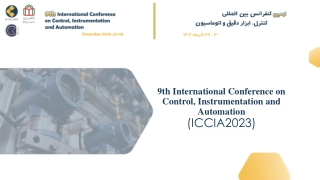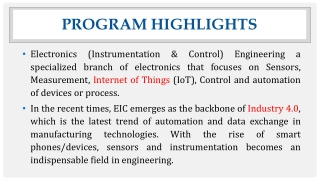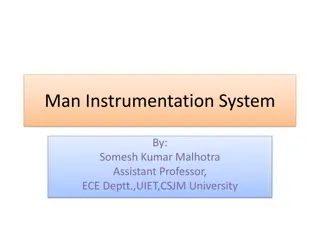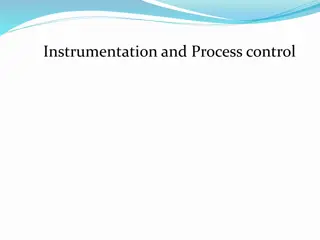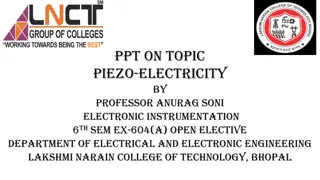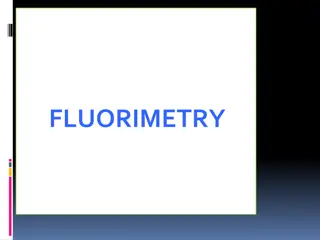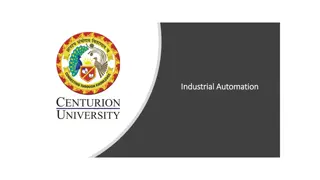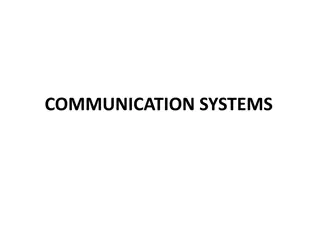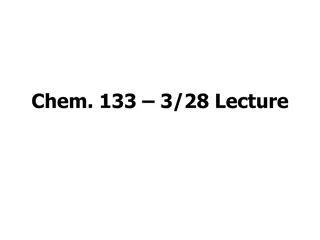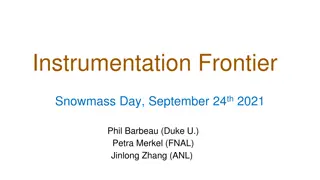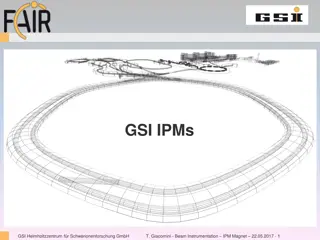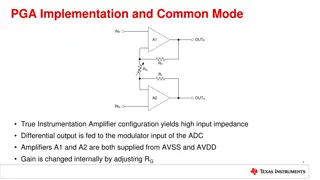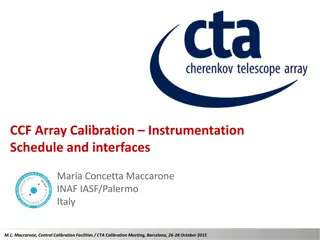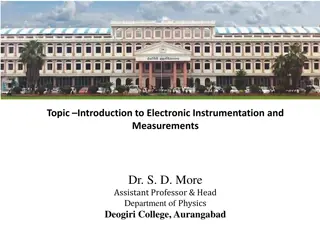Understanding Industrial Instrumentation Transmitters: A Comprehensive Guide
Industrial instrumentation transmitters play a crucial role in converting readings from sensors into standard signals for monitoring and control. Learn about different types of signals, such as pneumatic, analog, and digital, and how transmitters function in various industrial processes. Dive into examples to grasp the practical applications of transmitters in maintaining process variables effectively.
Download Presentation

Please find below an Image/Link to download the presentation.
The content on the website is provided AS IS for your information and personal use only. It may not be sold, licensed, or shared on other websites without obtaining consent from the author. Download presentation by click this link. If you encounter any issues during the download, it is possible that the publisher has removed the file from their server.
E N D
Presentation Transcript
Industrial Instrumentation: Transmitters 1
Introduction What are transmitters? A transmitter is a device which converts the reading from a primary sensor or transducer into a standard signal and transmits that signal to a monitor or controller. 2
Types of signals There are three kinds of signals that are present in the process industry to transmit the reading of a process variable from the instrument to the centralized control system. These are, Pneumatic signals Analog signals Digital signals 3
Pneumatic signals These are the signals produced by changing the air pressure in the signal pipe in proportion to the measured change in a process variable. The pneumatic signal range which is the common industrial standard is 3-15 psig. The 3 corresponds to the lower range value (LRV) and the 15 corresponds to the upper range value (URV). It is still a very commonly used signal type. However, since the invention of electronic instruments in the 1960s, the lower costs involved in running electrical signal wire through a plant as opposed to running pressurized air tubes has made pneumatic signal technology less popular. 4
Analog signals It is an electrical signal whose current s or voltage s magnitude represents some physical measurement or control quantity. The most common standard for transmitting an analog signal is the 4-20 mA current signals. With this signal, a transmitter sends a small current through a set of wires. The signal generated is a kind of a gauge in which 4 mA represents the lowest possible measurement, or zero, and 20 mA represents the highest possible measurement. 6
Example Consider a process that must be maintained at 100 C. An RTD temperature sensor and transmitter are installed in the process vessel, and the transmitter is set to produce a 4 mA signal when the process temperature is at 95 C and a 20 mA signal when the process temperature is at 105 C. The transmitter will transmit a 12 mA signal when the temperature is at the 100 C set point. As the sensor s resistance property changes in response to changes in temperature, the transmitter outputs a 4 20 mA signal that is proportional to the temperature changes. The signal transmitted can be converted to a temperature reading or an input to a control device. 7
Digital Signals The most recent addition to process signal control technology is the digital signals. Digital signals are discrete levels or values that are combined in specific ways to represent process variables and also carry other information, such as diagnostic information. The methodology used to combine the digital signals is referred to as protocol. Digital signal conditioning can be considered as changing one form of digital data to another form. 8
Telemetry Telemetering is the reproduction, at a convenient location, of measurements makes at remote point. It is the method of getting information from one point to the other. In general, a telemetering system consists of: A measuring instrument which may measure flow, liquid level, pressure, temperature or any other variable. A conversion element that converts the measured variable into a proportional air pressure and electrical quantity. The pressure lines or connecting wires which may carry the transmitted variable from the transmitter to the receiver. A receiver which indicates the size of the transmitted variable and may also record or control the measured variable. 9
TRANSMITTERS IN PROCESS INDUSTRIES The types of transmitters used in Process Industries include: Pressure transmitters Temperature transmitters Flow transmitters Level transmitters Analytic (O2 [oxygen], CO [carbon monoxide], and pH) transmitters. 10
Pressure Transmitters The types of different pressure transmitters used in industries are, Absolute pressure transmitter: This transmitter measures the pressure relative to perfect vacuum pressure (0 psi or no pressure). Gauge pressure transmitter: This transmitter measures the pressure relative to a given atmospheric pressure at a given location. When the pressure gauge reads 0 PSI, it is really atmospheric pressure. Differential Pressure transmitter: This transmitter measures the difference between two or more pressures introduced as inputs to the sensing unit, for example, measuring the pressure drop across an oil filter. Differential pressure is also used to measure flow or level in pressurized vessels. 12
Pressure Transmitters Other types are, Electronic pressure transmitters Pneumatic pressure transmitters Submersible pressure transmitters Digital pressure transmitters Wireless pressure transmitters 13
Level Transmitters Level transmitters are used to measure the level of a liquid or solid material within a space, and to provide information about these measurements that are proportional to the input level. These transmitters can measure the level continuously or at determined points. Point level transmitters provide output when a specific level measurement is reached. This output is generally in the form of an audible alarm or an electrical charge to turn on a switch. Continuous level transmitters measure level within a specified range and provide output as a continuous reading of the level. 14
Level Transmitters Different types of level transmitters are, Ultrasonic: Ultrasonic level transmitters are used for non-contact level sensing of highly viscous liquids, as well as bulk solids. They are also widely used in water treatment applications for pump control and open channel flow measurement. Conductive: These use a low-voltage, current-limited power source applied across separate electrodes. These are ideal for the point level detection of a wide range of conductive liquids such as water, and is especially well suited for highly corrosive liquids such as caustic soda, hydrochloric acid, nitric acid, ferric chloride, and similar liquids. 15
Level Transmitters Pneumatic: These transmitters are intended to be used in hazardous environments, where there is no electric power or its use is restricted, and in applications involving heavy sludge or slurry. Capacitance Magnetic tracking Hydrostatic 16
Temperature transmitters A temperature transmitter is a device that captures a signal from a sensor such as a thermocouple or RTD, calculates the temperature based on this signal, and then converts it to a 4-20 mA type of signal for output to a receiving device. There are some types of temperature transmitters. They are, Thermocouple type: When a thermocouple is used, the temperature transmitter measures the electromotive force, and uses this electromotive force data to calculate the temperature. RTD type: When an RTD is used, the temperature transmitter passes a very small electric current through the RTD to measure electrical resistance. Based on the relationship between resistance and temperature, it then calculates the temperature. 18
References http://www.pacontrol.com/download/Process Control Fundamentals.pdf Advisory Group on Aerospace Research and Development (AGARD) FTI Series, Vol.17, Analog Signal Conditioning for Flight Test Instrumentation,Veatch and Bogue, Pg. 537-539, 1986 Signal Conditioning Tutorial, National Instruments, www.natinst.com Discrete-Time Signal Processing, Oppenheim and Schafer, Prentice Hall, 1989 IRIG 119-88, Telemetry Applications Handbook, Pg. 714-716. http://www.iqsdirectory.com/pressure-transducers/pressure- transmitter http://www.semrad.com.au/web/level-transmitters.html http://www.yokogawa.com/fld/qa/yta/fld-qa-ytaseries01en.htm#l1q1 19
Thank You! 20


